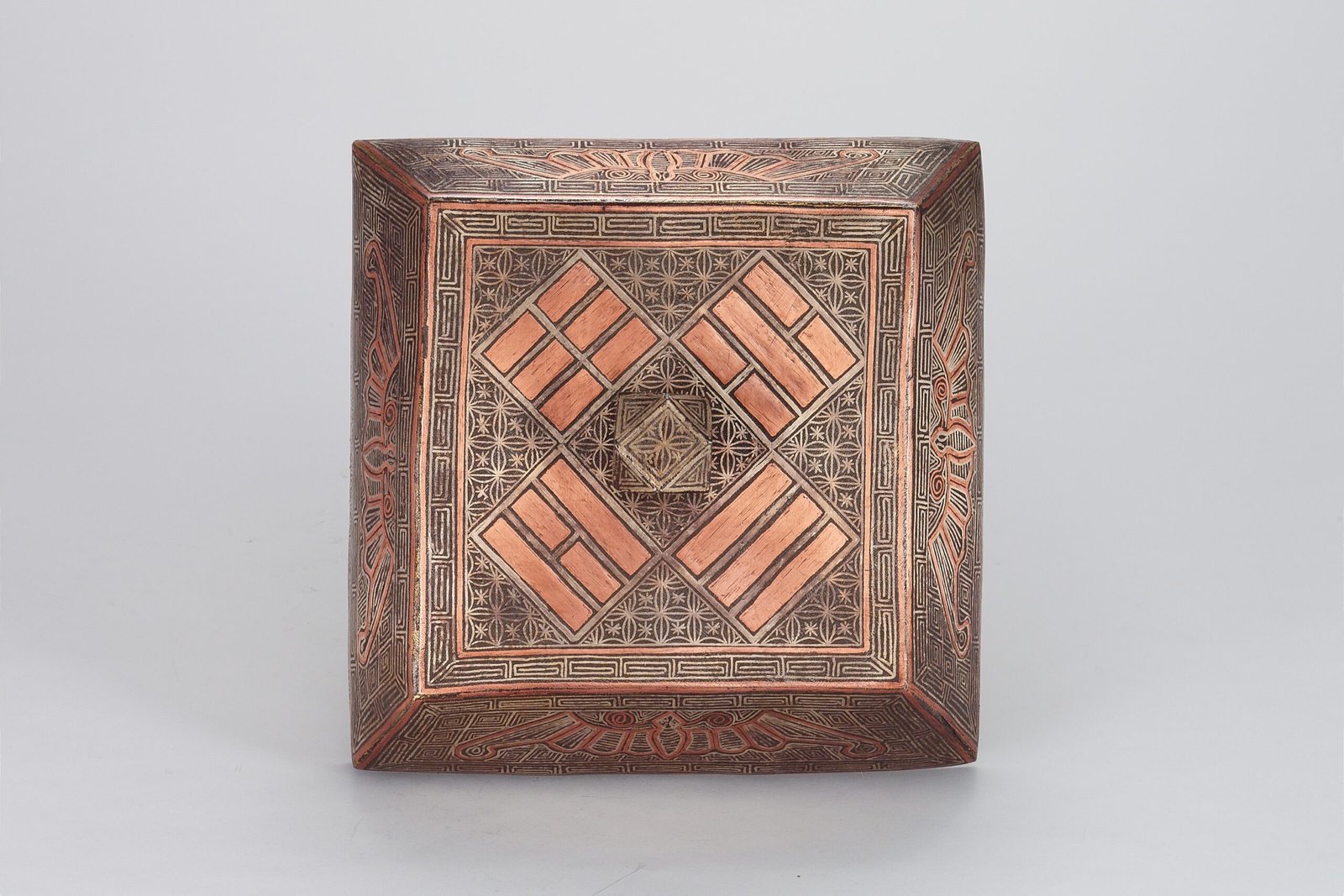Inlaying, a method known as “ipsa” in Korean, involves cutting lines or grooves into metals like copper and iron, and then filling them with other metals such as gold, silver, and copper to create intricate patterns. Creating these grooves is a challenging task that demands hours of meticulous chiseling. In the art of ipsa, every step is carried out by hand, from preparing thin wires to meticulously hammering them onto the finely chiseled and engraved surface, resulting in splendid designs. This process demands the highest level of dexterity and precision from a craftsman, skills that can only be acquired through years of dedicated practice.
There are several techniques in metalworking, including casting, forging, and sculpting. The inlaying technique, which has evolved in various ways around the world, originally appeared in ancient Mesopotamia around 3000 BC and further developed in Persia and the Islamic world. In East Asia, it prominently features in bronze objects from the Warring States period in China.
In Korea, the exact origins of the practice of inlaying metal surfaces with other metals remain uncertain. However, it is believed that this method was initially employed during the Three Kingdoms period (57 BC to 668 AD) and further developed into a technique involving thin plates during the Unified Silla period.
During the Unified Silla (668–935) and Goryeo (918–1392) dynasties, this decorative method found significant application in Buddhist crafts, particularly in the embellishment of items such as incense burners and bowls. Under the Joseon dynasty, it underwent further refinement and began to be widely utilized for adorning everyday objects, such as braziers, candlesticks, and cigarette cases.
Insertion is a technique in which a gold or silver wire is introduced by creating a groove in the area to be decorated with a motif. This method is primarily employed in ironwork, where an entire object or a part of it is intricately worked with a chisel and then intricately inserted.
LINKS: Ipsa (Korean traditional silver or gold inlaying) – 전통공예 입사(入絲), Metal inlaying.
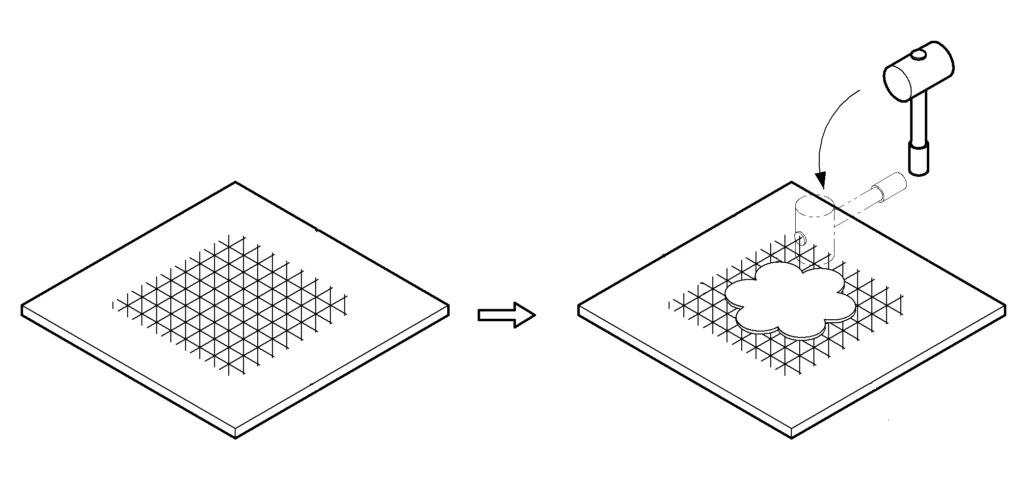
Second step: Filling the plate with other metals, such as gold or silver threads, to create the design. This is achieved by pounding the threads into the grooves using a hammer, as illustrated in figure 2.



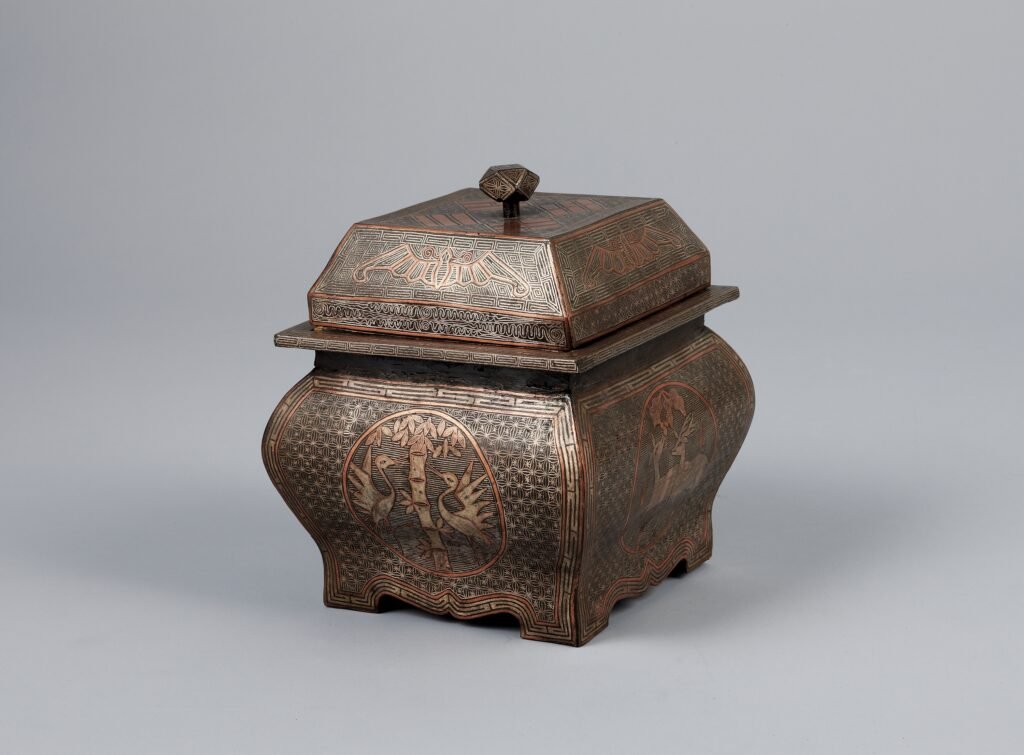

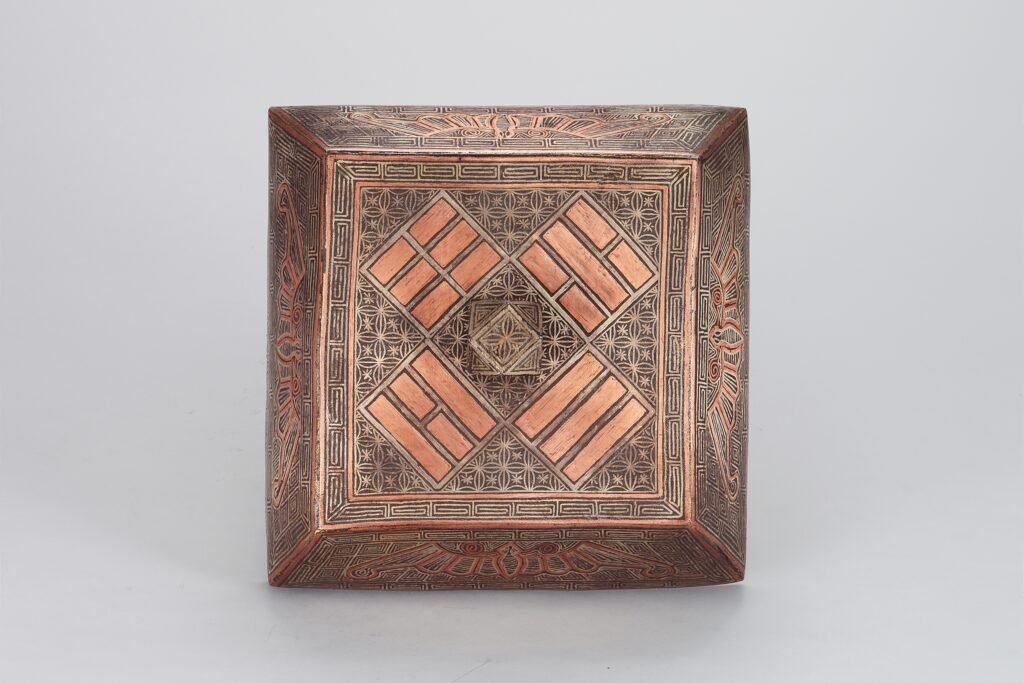
National Museum of Korea.
During the Joseon Dynasty, many incense burners were produced following the tradition of Goryeo. These incense burners were used not only in temples, but also for various rituals. Each of these braziers represented a combination of the ten symbols of longevity, such as pine trees, bamboos, grapes, deer, cranes, and turtles, in a circle of four sides, and various geometric patterns. was decorated with incident without a margin.
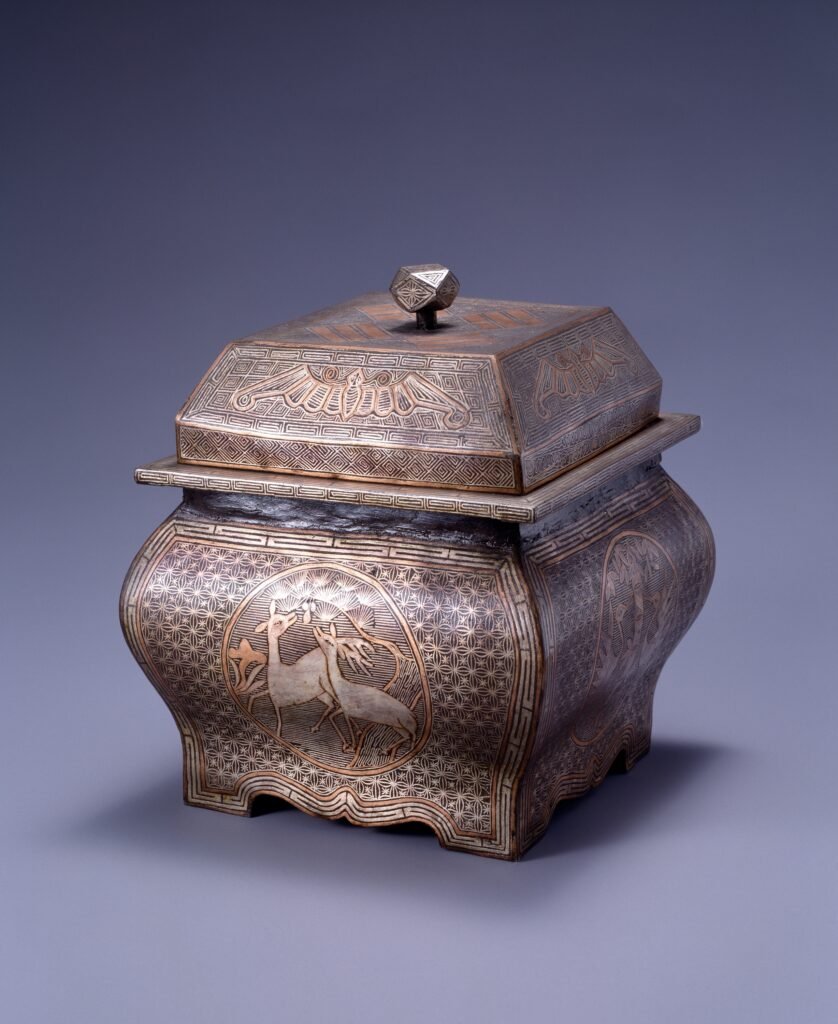
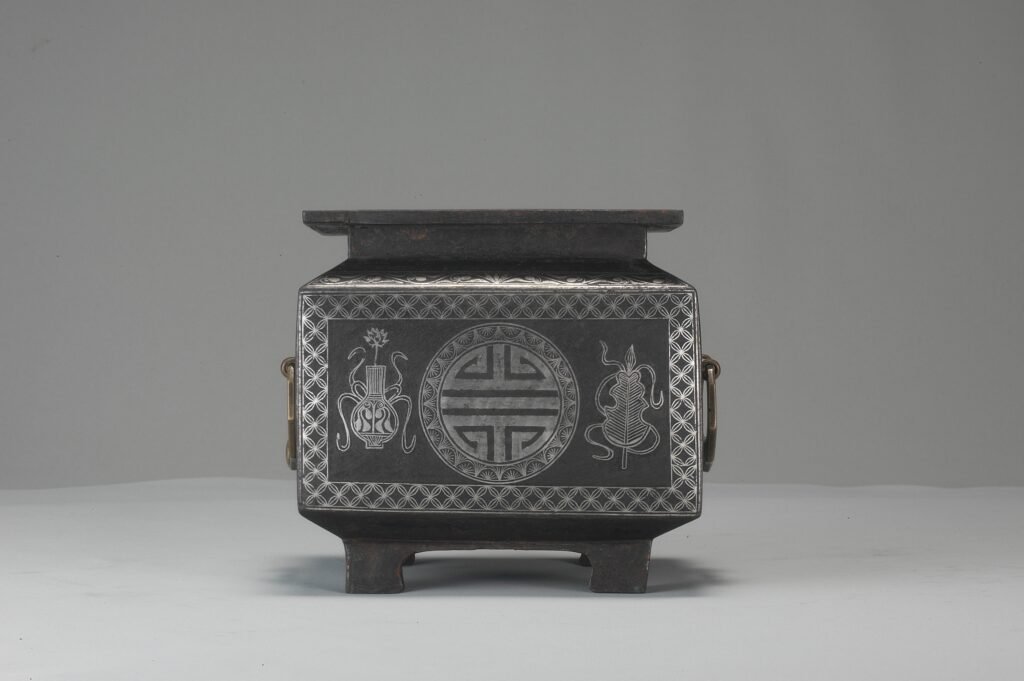



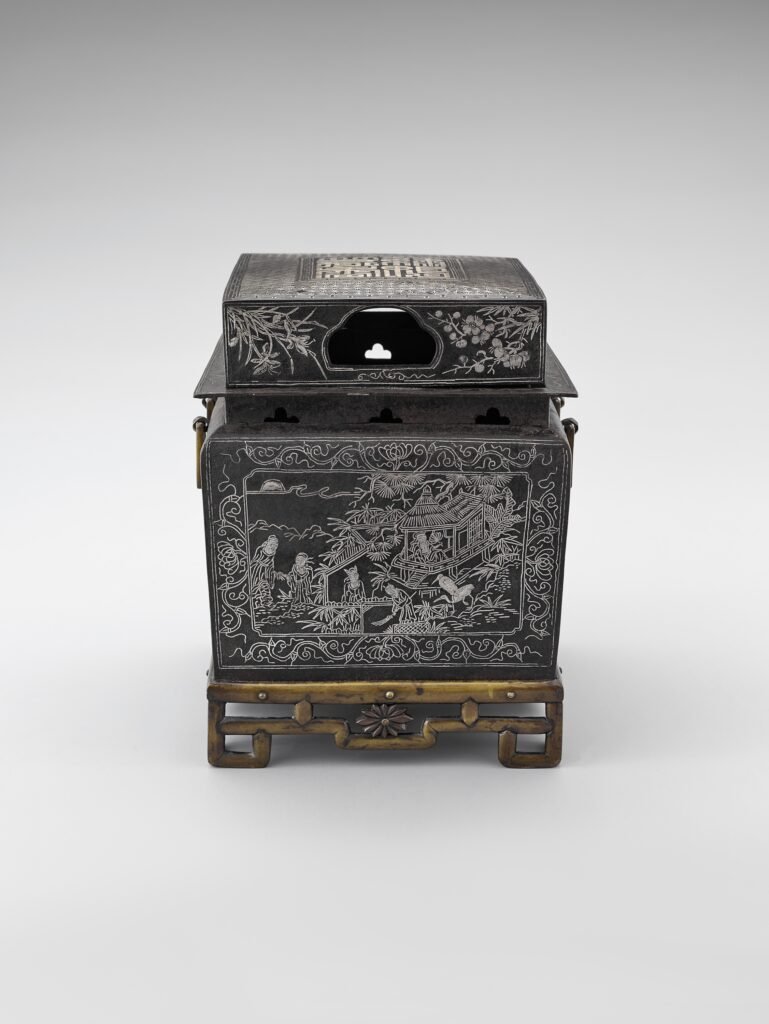
Iron Silver Incandescent Square Brazier. H. 25,3 cm, W. 18,4 cm, D. 18,7 cm.
National Museum of Korea.
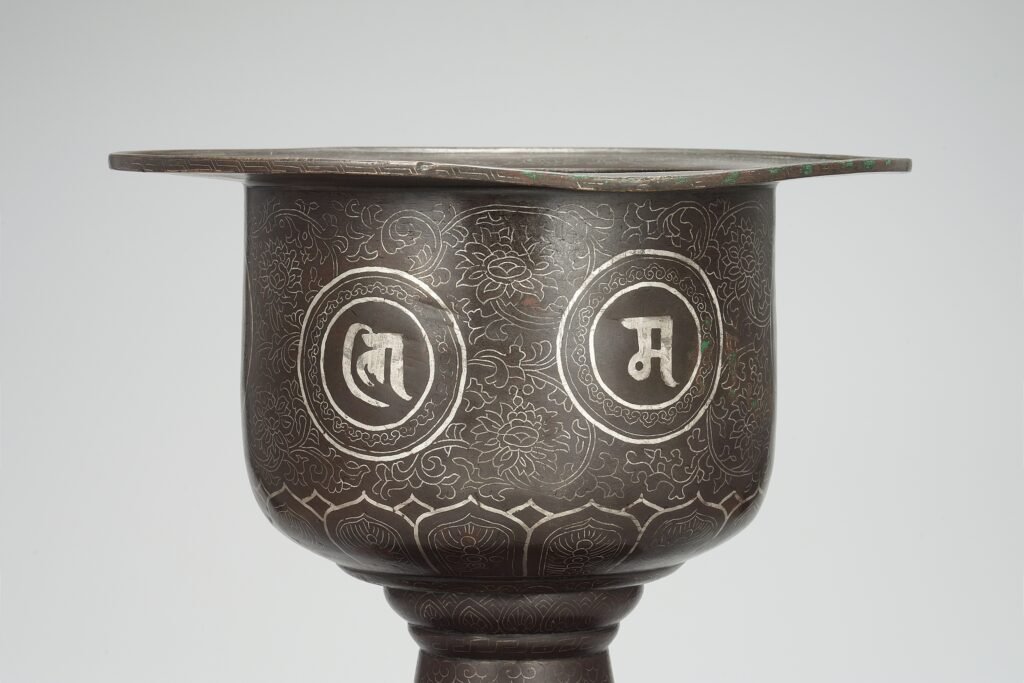
H. 39 cm, diameter 38,2 cm. National Museum of Korea.
Gongyanggu (供養具) is an offering to the Buddha, such as incense, flowers, water, and food, and includes incense boxes, incense burners, flower baskets, vases, and candlesticks. In particular, incense burners, vases, and candlesticks are the basic offerings used in Buddhist altars, and are called the Three Gujok (三具足). Among the incense burners used to offer incense to the Buddha, the incense burner with a high heel that spreads like a trumpet and a bowl-shaped body with a wide jeon is called an incense burner. Cheonggoksa Temple in Jinju is the temple of Queen Sindeok, the second wife of King Taejo Lee Seong-gye. This incense burner was made in 1397 to pray for the repose of the queen who died in 1396. It was produced by the initiation technique in which grooves were cut according to the pattern on the bronze background and then silver wires were inserted to decorate it. The entire body is elegantly decorated with Sanskrit characters and lotus vine patterns.
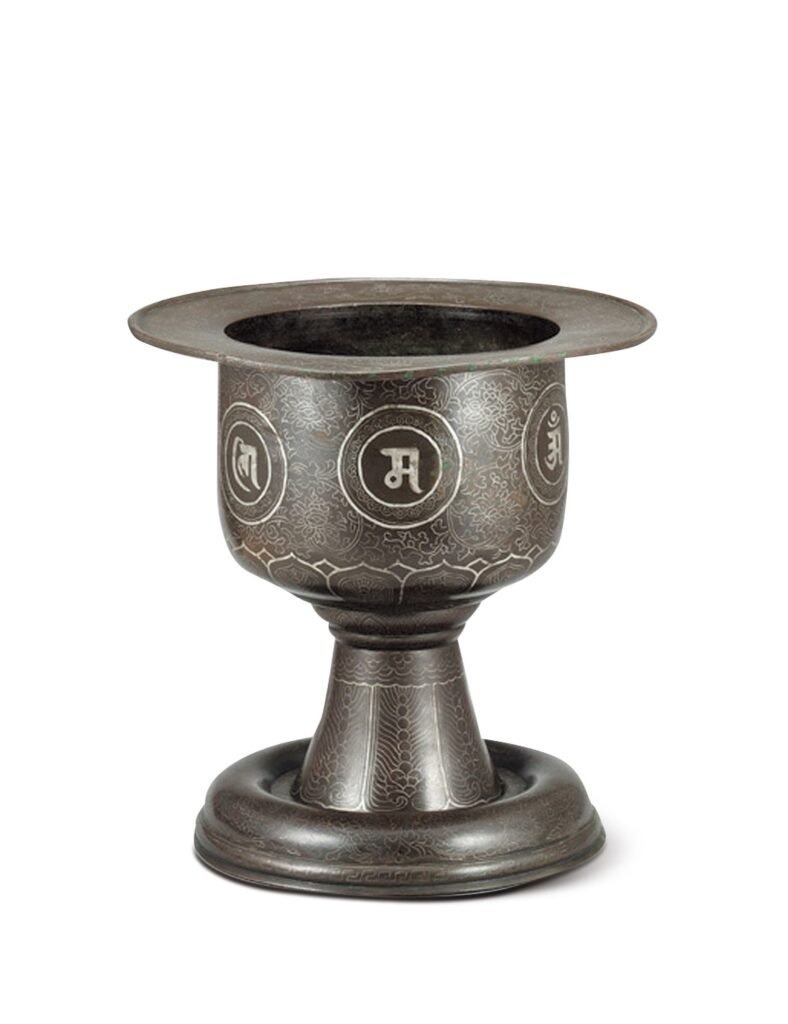

H. 9,5cm, diameter 21cm. The incense burner of the Goryeo Dynasty began to be decorated with splendid patterns using the silver inlaid technique after the middle of the 12th century. Collection: National Museum of Korea.
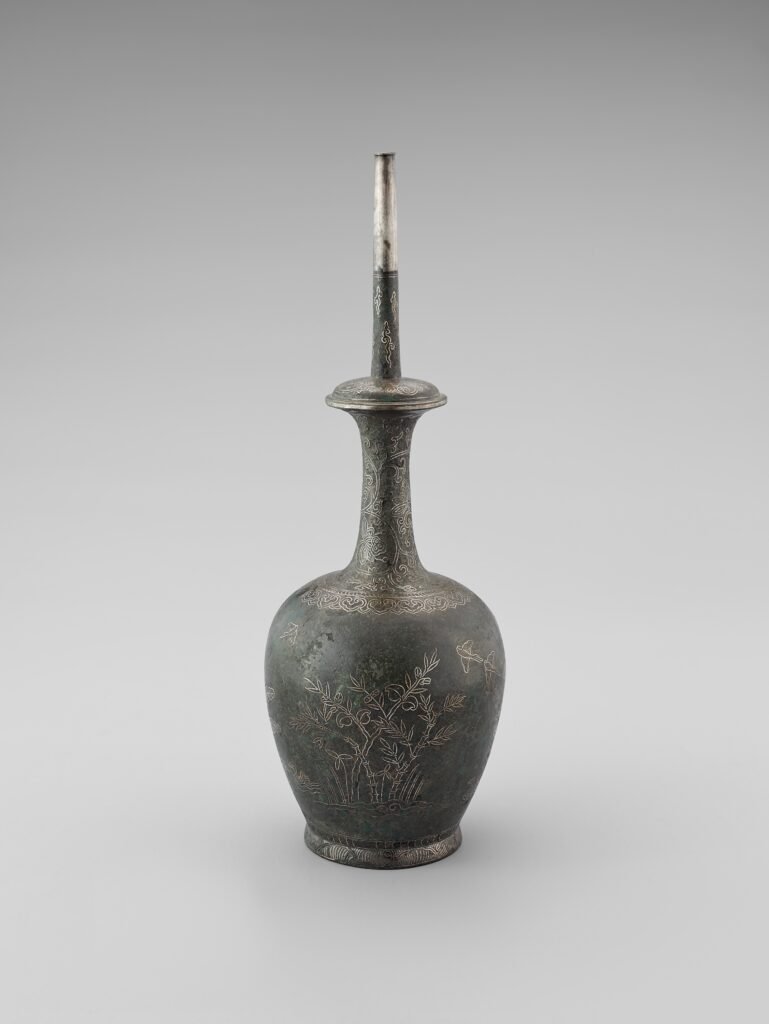
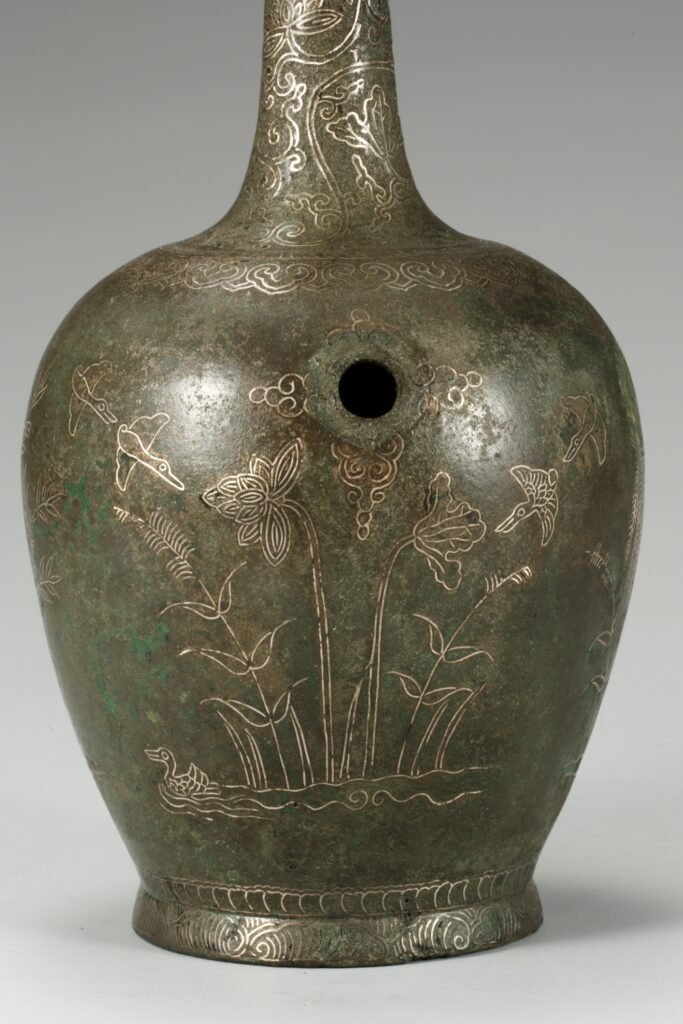

H. 34,8cm, trunk diameter 12,1cm.
“Jeongbyeong” is a bottle that holds clear water. During a Buddhist ceremony, it is also used when the monk leading the ceremony sprinkles nectar water with a pine branch to drive away all demons. During the Goryeo Dynasty, it was especially produced in large numbers with the rise of Buddhism.
The front of the body is gracefully decorated with a silver-inlaid Poryusu-Geummun pattern, which was mainly used as a decorative pattern on Goryeo Jeongbyeong or Goryeo celadon.
Collection: National Museum of Korea.
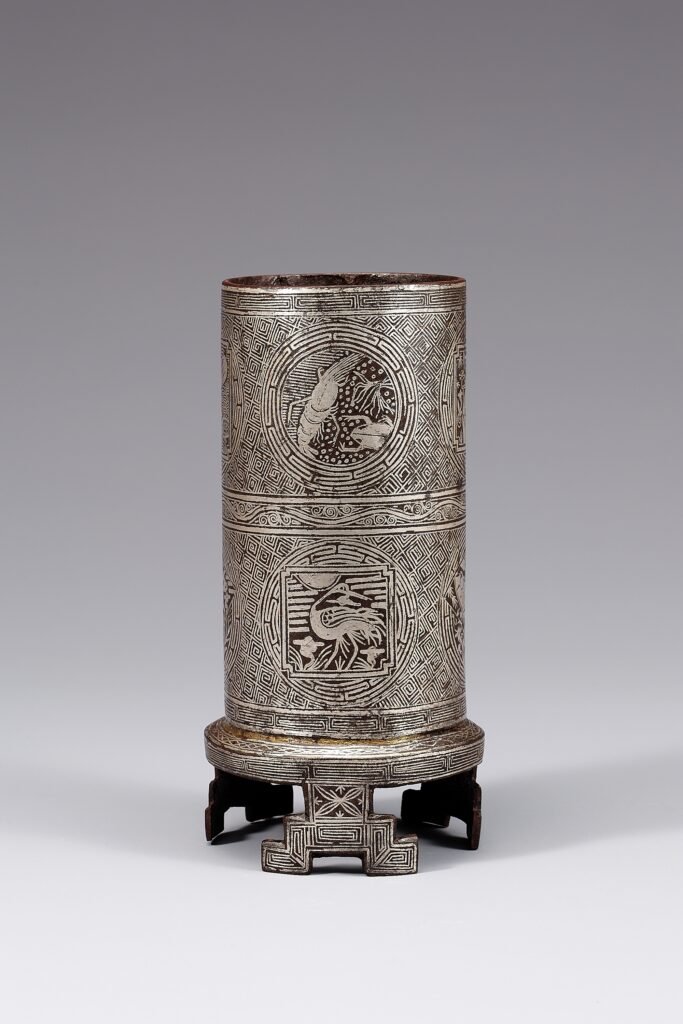
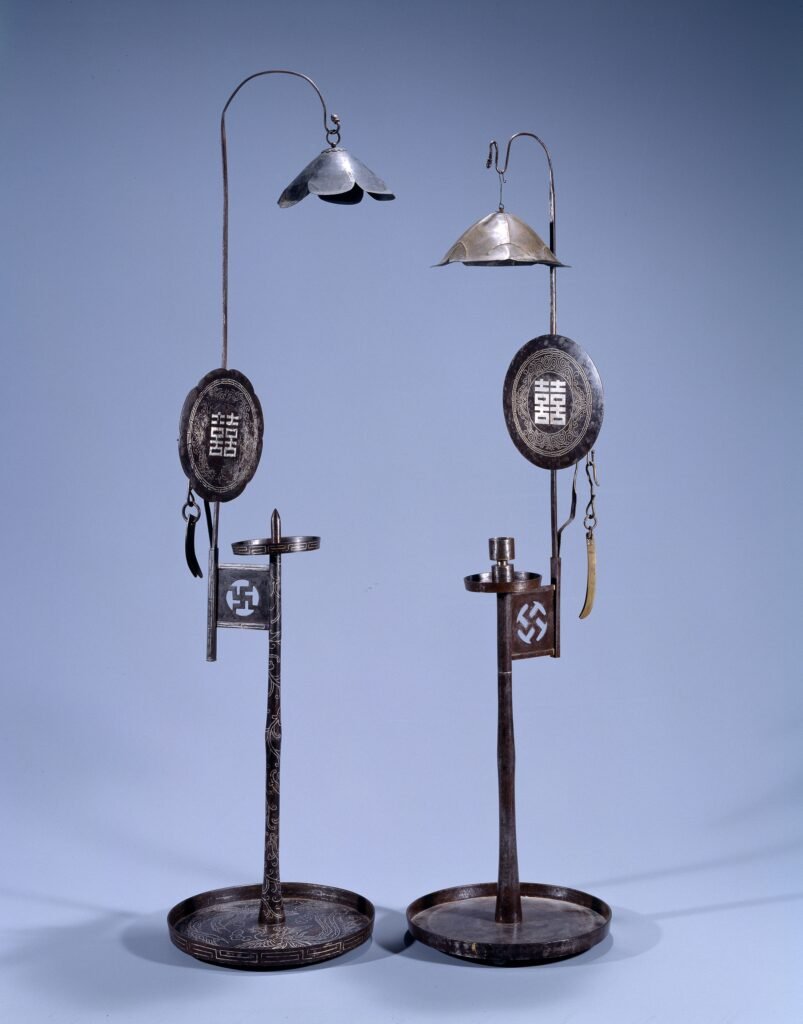


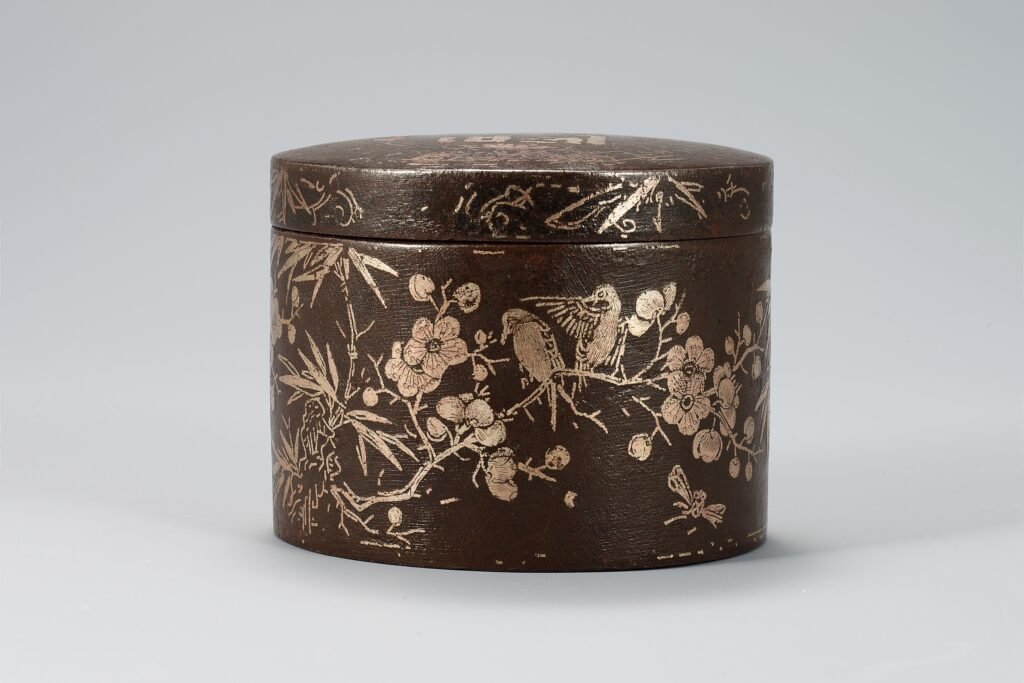

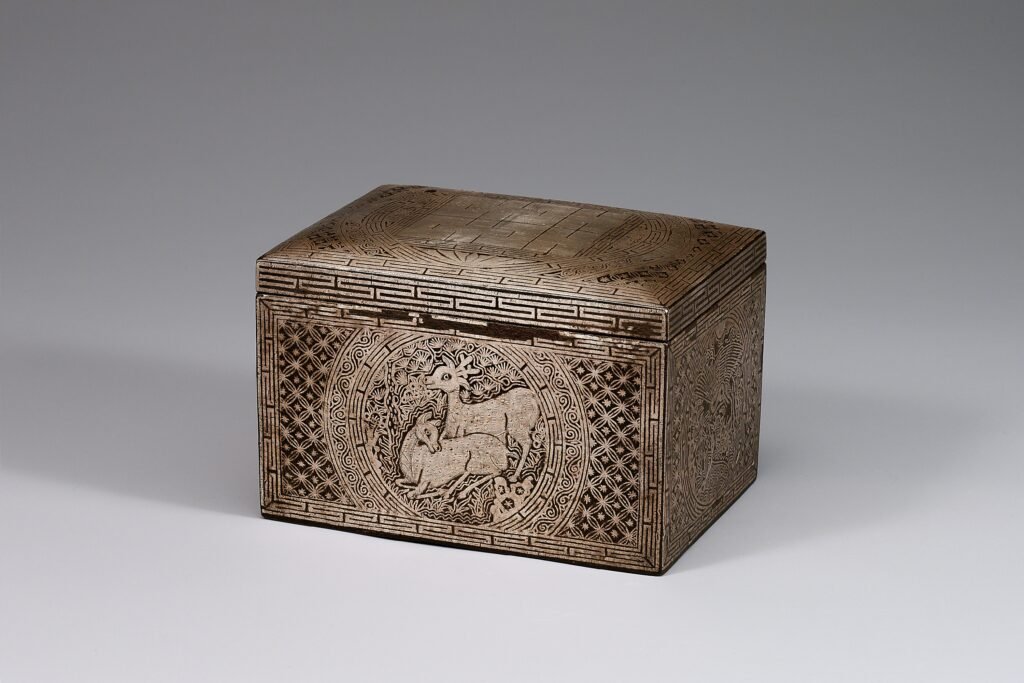
A box for storing tobacco, made in the shape of a long rectangular hexahedron. The character ″Hee (囍)″ is engraved on the lid, and the rim is decorated with a lightning pattern [雷文]. On the side, the 10 symbols of longevity, such as deer, pine tree, crane, and turtle, are inlaid with silver. There are some corrosion and cracks on the inside, but it is in relatively good condition.

A box for storing tobacco, made in the shape of a long rectangular hexahedron. One side has rings and opening and closing decorations, and the other side has 10 symbols of longevity, such as deer and cranes, inlaid with silver. And on the lid part, the word ″Subok (壽福)″ is engraved. The interior and bottom are rusted, and some parts that have been incident with silver have come off, but they are in relatively good condition.

19th century
of rectangular form, decorated with inset silver to show animals and a double character within circular reserves over a diaper ground. Private collection.
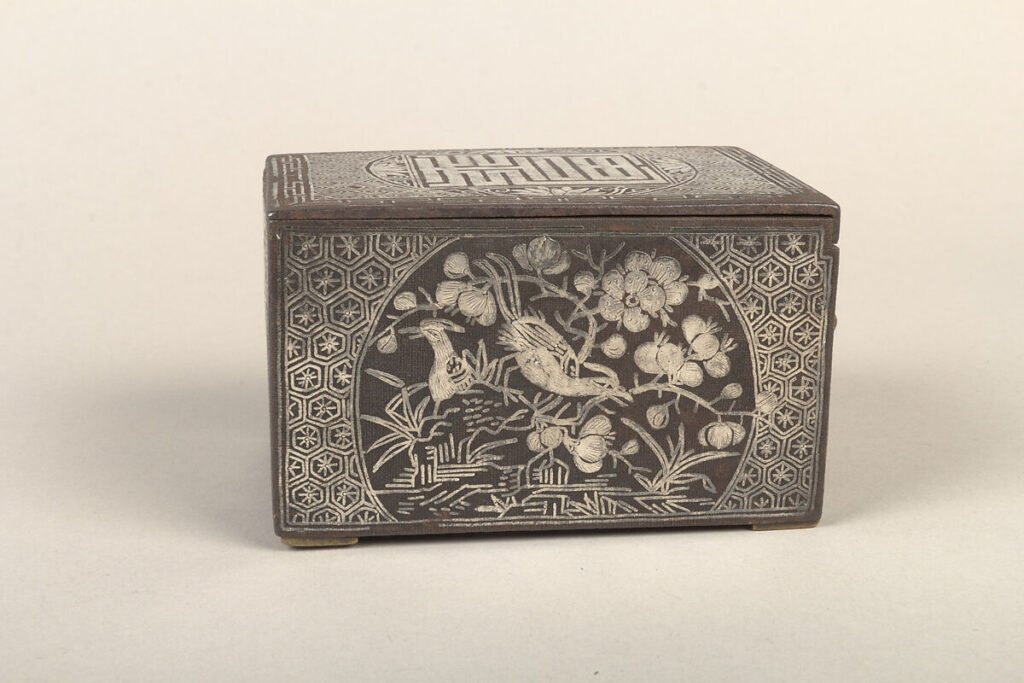
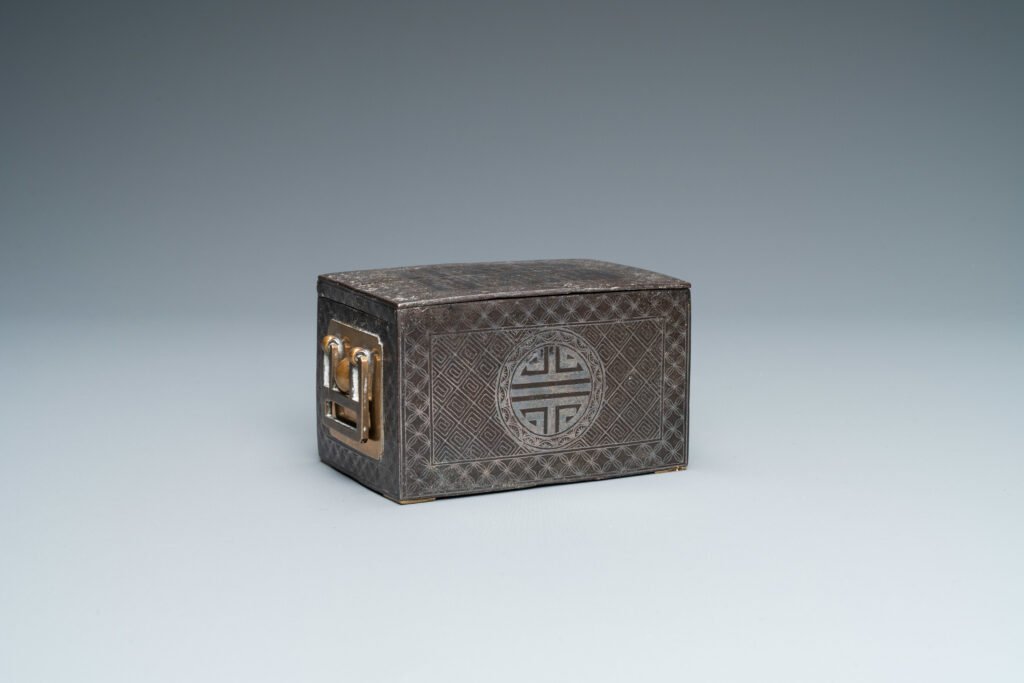

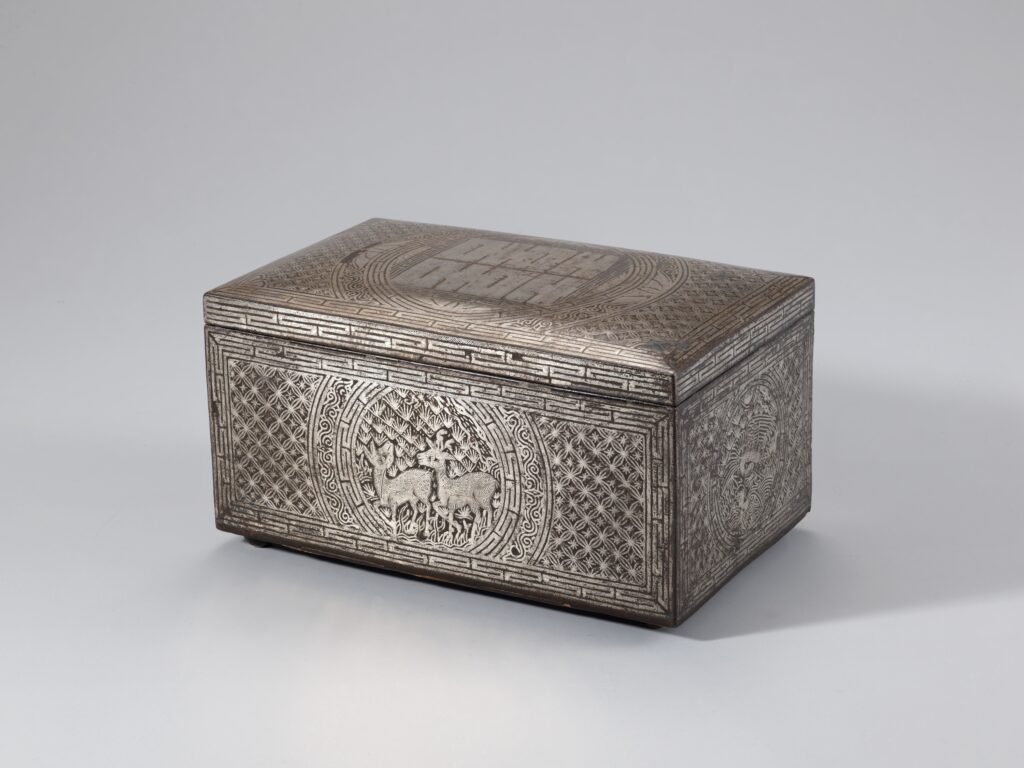
H. 9,1cm, W. 10cm, D. 6,8cm.
Collection National Museum of Korea.


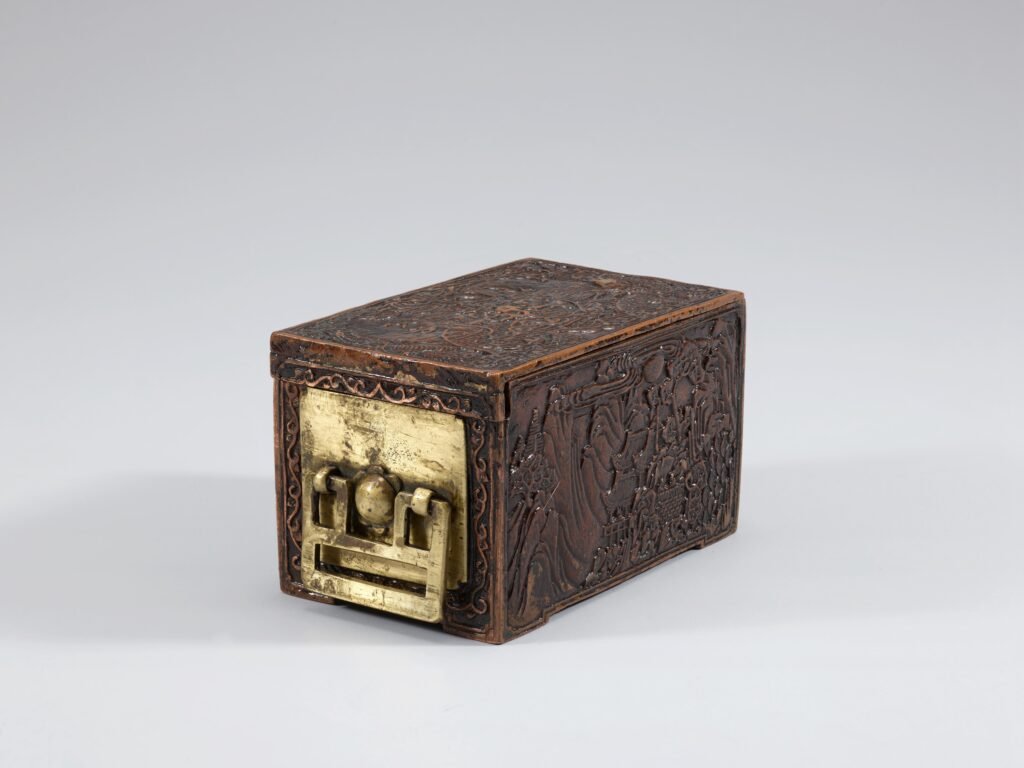
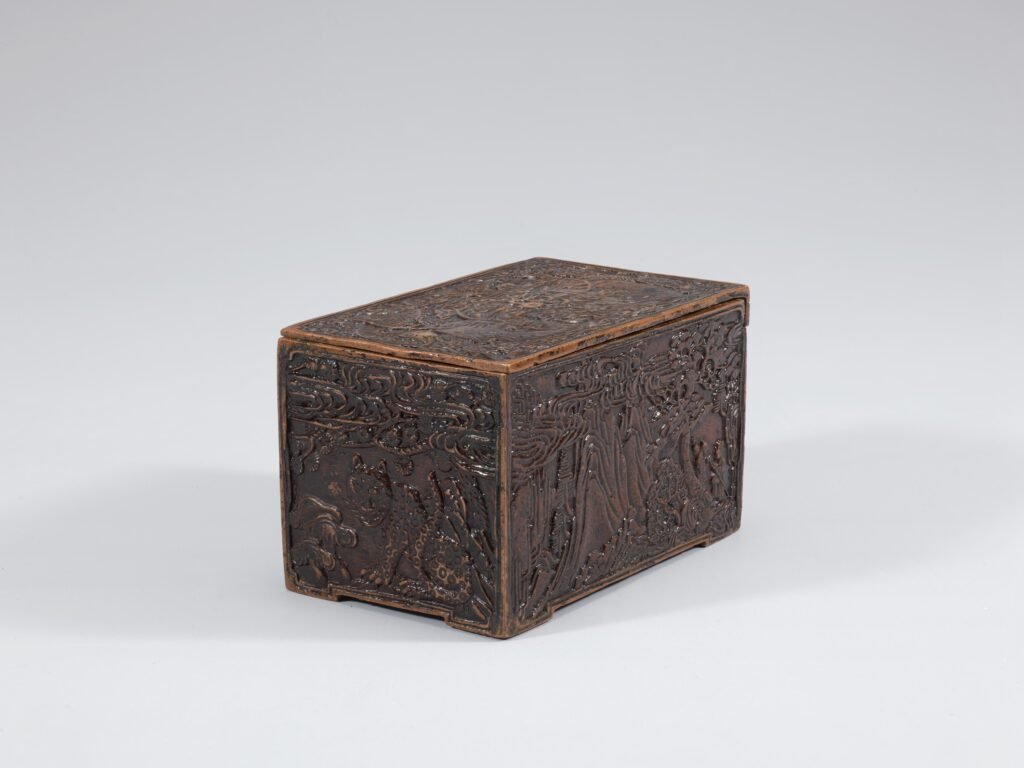


철제 은입사 감실 (鐵製銀入絲龕室)
Late 1800s. Iron inlaid with silver and copper decoration
H. 35cm, W. 30cm, D. 14 cm. Collection of the Cleveland Museum of Art.
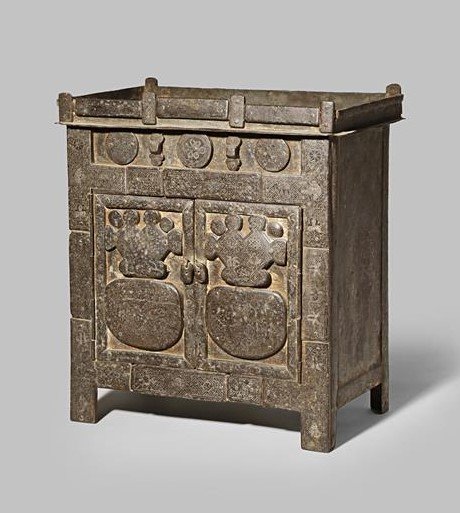
19TH CENTURY
The rectangular body with a pair of hinged doors decorated with geometric plaques beneath a frieze of roundels and flanked by panels decorated with Buddhist emblems, the sides and reverse undecorated, 32.5cm x 30cm x 18.5cm. Sold at Woolley & Wallis auction, UK. May 2017.

H:40cm, Diameter: 39,5cm. Fukuoka Yumekai Auction. Osaka, Japan.
February 22, 2025.

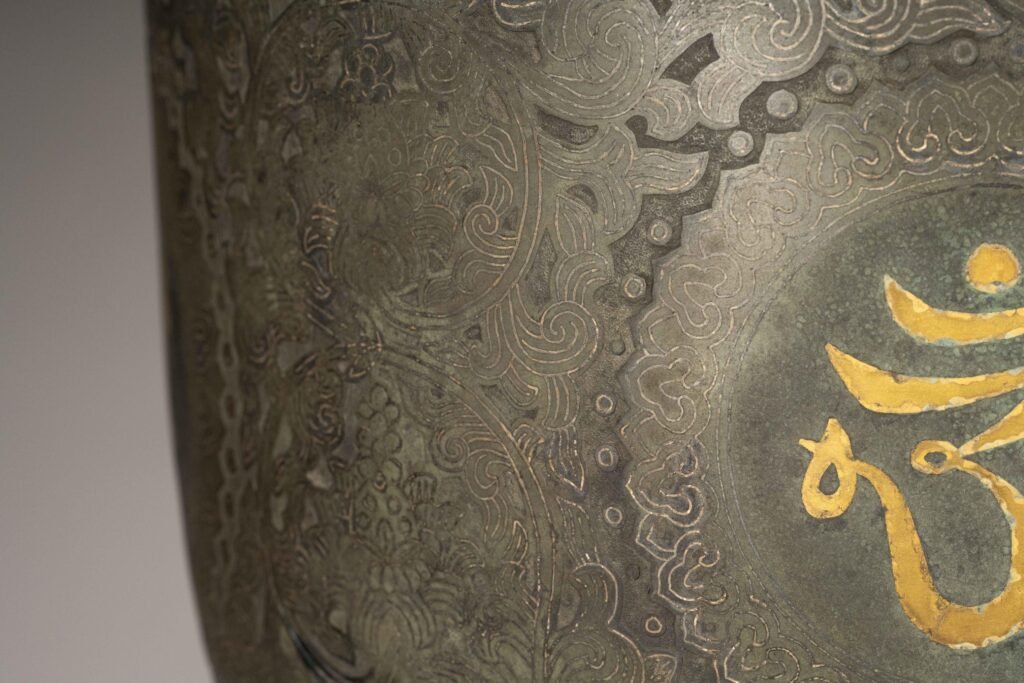


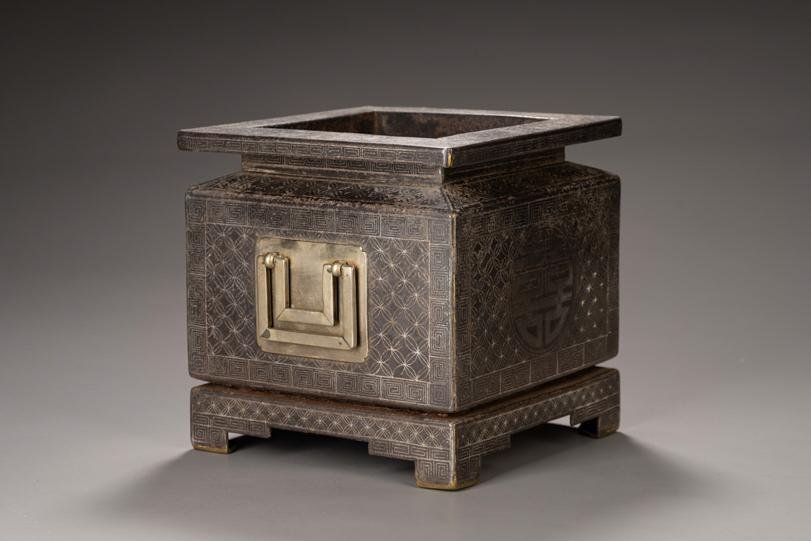
Fukuoka Yumekai Auction. Osaka, Japan.
February 22, 2025.



APPENDIX:

Korean Traditional Silver or Gold Inlaying –
한눈에 보는 입사.
Author: Choi Eung-chon.
Publisher: Korea Craft & Design Foundation, Seoul, Korea.
Year 2016. ISBN. 9788997252701

